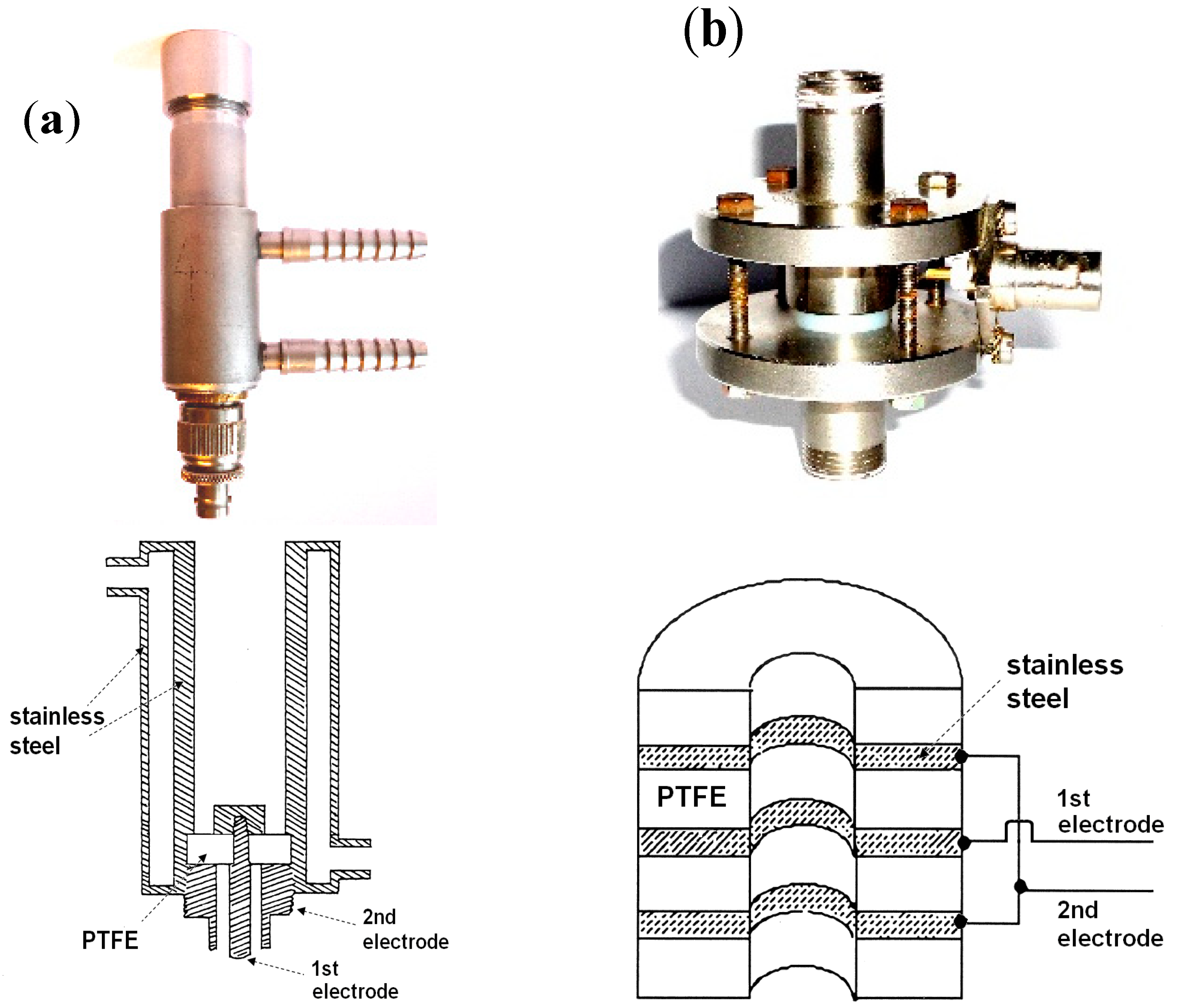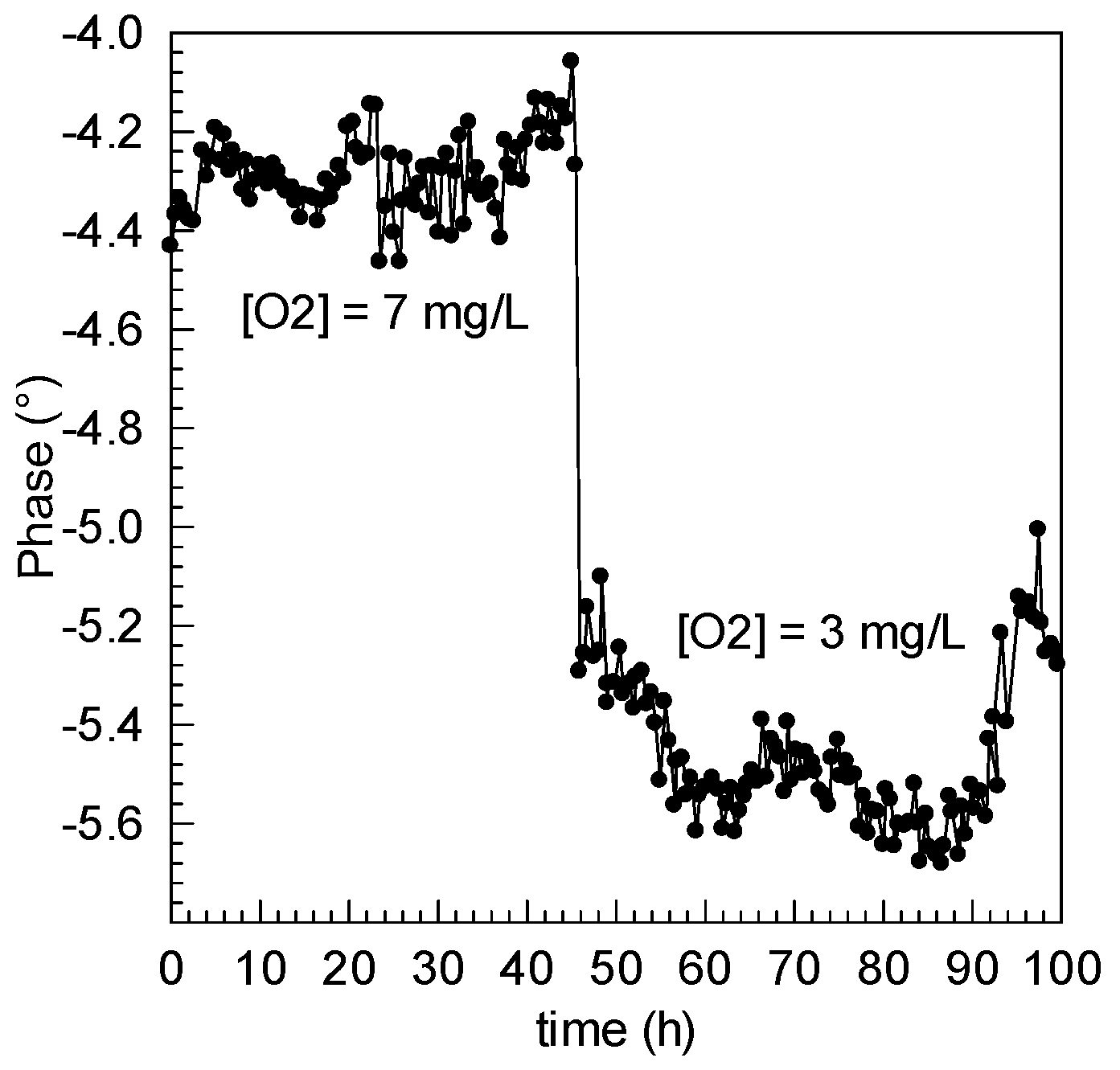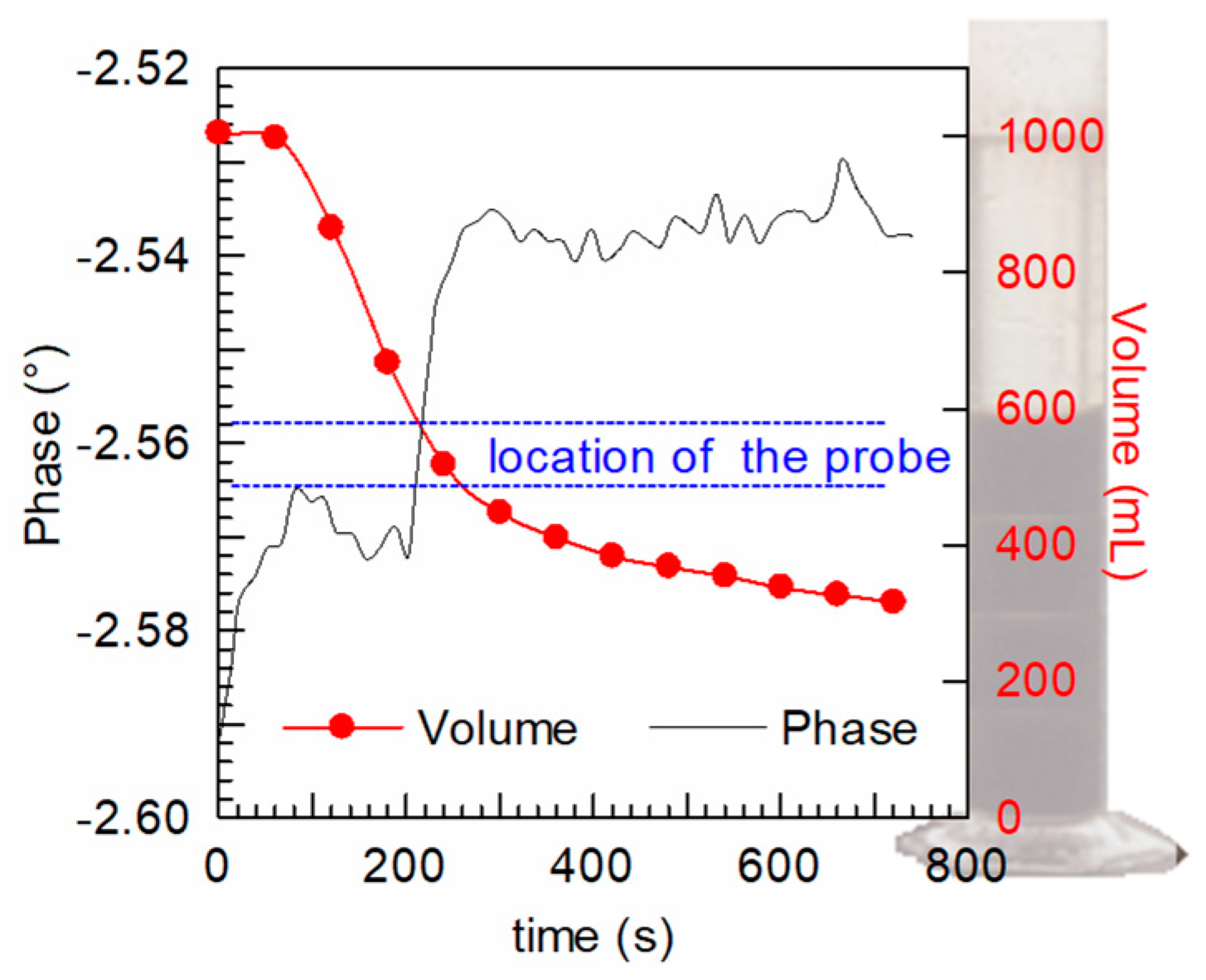Submersible Dielectric Probe for In Situ Monitoring of Suspensions and Its Application to Activated Sludge in Waste Water Treatment Plant †
Abstract
:1. Introduction
2. Materials and Methods
2.1. Impedancemeters
2.2. Dielectric Probe and Cells
3. Results and Discussion
3.1. Comparison of the Response of the Submersible Probe with That of a Classic Dielectric Cell
3.2. Real-Time Monitoring of Activated Sludge in Pilot Reactors
3.3. Monitoring of Deliberate Dysfunctions
3.4. Monitoring of the Settling of the Sludge
4. Conclusions
Acknowledgments
Conflicts of Interest
References
- Benoit, E.; Guellil, A.; Block, J.C.; Bessière, J. Dielectric permittivity measurement of hydrophilic and hydrophobic bacterial suspensions: a comparison with the octane adhesion test. J. Microbiol. Methods 1998, 32, 205–211. [Google Scholar] [CrossRef]
- Pajoum-Shariati, F.; Sarrafzadeh, M.H.; Mehrnia, M.R.; Sarzana, G.; Ghommidh, C.; Grasmick, A.; Heran, M. Dielectric monitoring and respirometric activity of a high cell density activated sludge. Environ. Technol. 2014, 35, 425–431. [Google Scholar] [CrossRef] [PubMed]






Publisher’s Note: MDPI stays neutral with regard to jurisdictional claims in published maps and institutional affiliations. |
© 2017 by the authors. Licensee MDPI, Basel, Switzerland. This article is an open access article distributed under the terms and conditions of the Creative Commons Attribution (CC BY) license (https://creativecommons.org/licenses/by/4.0/).
Share and Cite
Perdicakis, M.; Bessière, J.; Cortot, J. Submersible Dielectric Probe for In Situ Monitoring of Suspensions and Its Application to Activated Sludge in Waste Water Treatment Plant. Proceedings 2017, 1, 441. https://doi.org/10.3390/proceedings1040441
Perdicakis M, Bessière J, Cortot J. Submersible Dielectric Probe for In Situ Monitoring of Suspensions and Its Application to Activated Sludge in Waste Water Treatment Plant. Proceedings. 2017; 1(4):441. https://doi.org/10.3390/proceedings1040441
Chicago/Turabian StylePerdicakis, Michel, Jacques Bessière, and Jérôme Cortot. 2017. "Submersible Dielectric Probe for In Situ Monitoring of Suspensions and Its Application to Activated Sludge in Waste Water Treatment Plant" Proceedings 1, no. 4: 441. https://doi.org/10.3390/proceedings1040441




